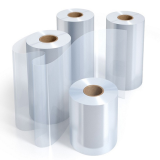Tarpaulin

Tarpaulin, often referred to as a tarp, is a heavy-duty, waterproof fabric commonly used for various outdoor applications. It is made from materials such as polyethylene or canvas, which are treated to be resistant to water, UV rays, and mildew.
Tarpaulins come in different sizes, shapes, and thicknesses, depending on their intended use. They are known for their durability and versatility, and they find applications in numerous industries and activities, including construction, agriculture, camping, transportation, and emergency preparedness.
Some common uses of tarpaulins include:
-
Shelter: Tarps can be used to create temporary shelters or coverings to protect against rain, wind, or sun. They are often used in camping, outdoor events, or as emergency shelters during disasters.
-
Protection: Tarps can be used to cover and protect various objects or surfaces, such as vehicles, equipment, furniture, or construction materials, from weather elements or dust.
-
Groundsheet: Tarps can be used as ground covers to create a barrier between the ground and a tent or other outdoor living areas. They help prevent moisture or dirt from seeping into the living space.
-
Truck and trailer covers: Tarps are commonly used to cover the cargo in trucks or trailers, providing protection from the weather and securing the load during transportation.
-
Pond liners: Heavy-duty tarps are used as pond liners to create and maintain artificial ponds, water features, or containment areas for water storage or irrigation purposes.
-
Agriculture and gardening: Tarps can be used in agriculture and gardening to cover crops, protect them from extreme weather conditions, or create temporary greenhouses.
-
Paint or construction projects: Tarps are used to cover floors, walls, or furniture during painting or construction projects to prevent damage or staining.
When using a tarpaulin, it's important to ensure proper anchoring and secure fastening to prevent it from being blown away by wind or water. Additionally, inspecting and maintaining the tarp's integrity over time is essential for its longevity and effectiveness.


